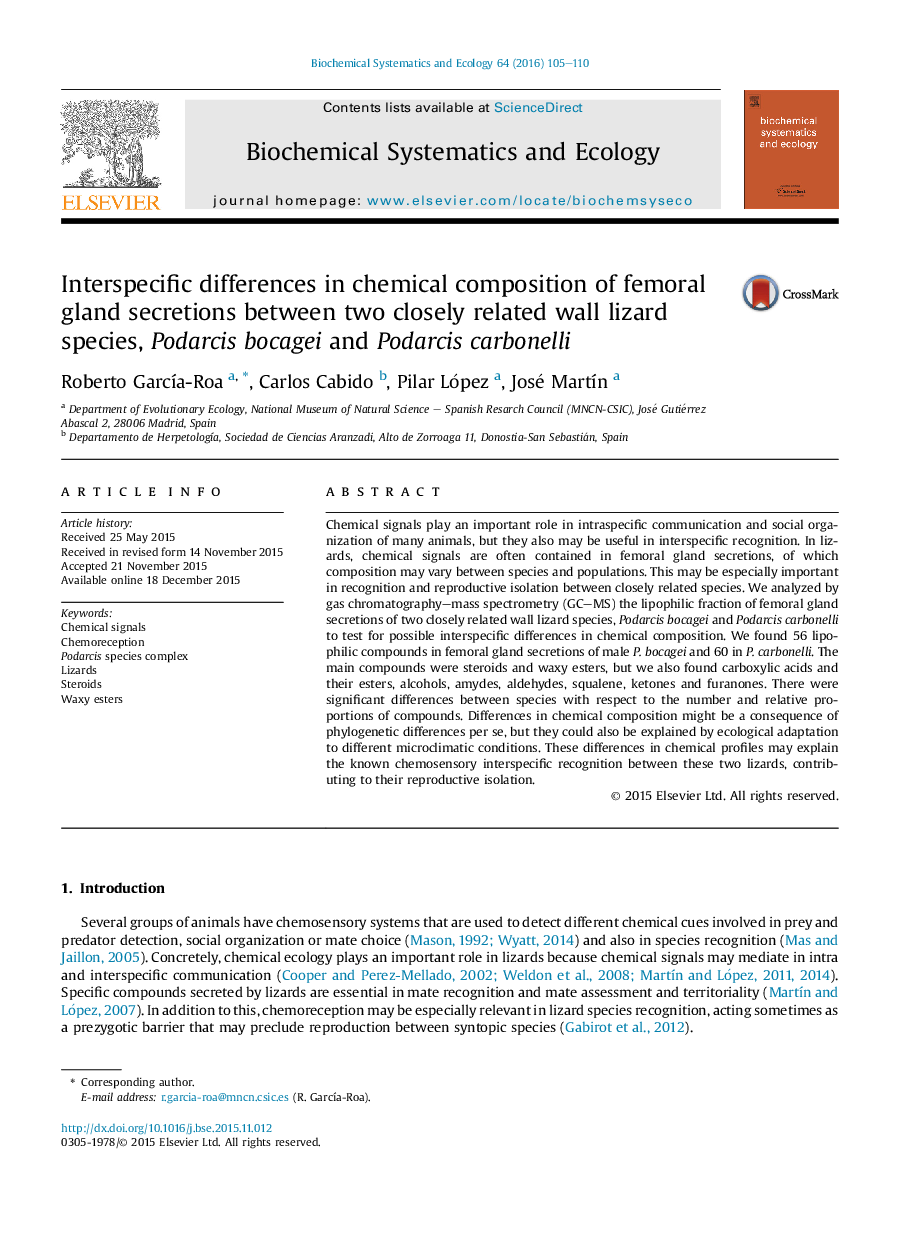| Article ID | Journal | Published Year | Pages | File Type |
|---|---|---|---|---|
| 1353837 | Biochemical Systematics and Ecology | 2016 | 6 Pages |
•We describe chemical profiles of two related wall lizard species.•Quantitative and qualitative chemical compounds differences are examined.•Steroids and waxy esters were the main types of compounds in both species.•High proportion of waxy esters was found in comparison with other Podarcis species.
Chemical signals play an important role in intraspecific communication and social organization of many animals, but they also may be useful in interspecific recognition. In lizards, chemical signals are often contained in femoral gland secretions, of which composition may vary between species and populations. This may be especially important in recognition and reproductive isolation between closely related species. We analyzed by gas chromatography–mass spectrometry (GC–MS) the lipophilic fraction of femoral gland secretions of two closely related wall lizard species, Podarcis bocagei and Podarcis carbonelli to test for possible interspecific differences in chemical composition. We found 56 lipophilic compounds in femoral gland secretions of male P. bocagei and 60 in P. carbonelli. The main compounds were steroids and waxy esters, but we also found carboxylic acids and their esters, alcohols, amydes, aldehydes, squalene, ketones and furanones. There were significant differences between species with respect to the number and relative proportions of compounds. Differences in chemical composition might be a consequence of phylogenetic differences per se, but they could also be explained by ecological adaptation to different microclimatic conditions. These differences in chemical profiles may explain the known chemosensory interspecific recognition between these two lizards, contributing to their reproductive isolation.
